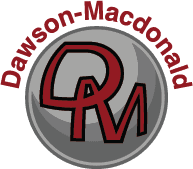What is a Blast Room?
Blast rooms offer an effective and safe way to prepare metal workpieces for finishing. By performing abrasive blasting processes within these spaces, your business can save money, time, and the environment by effectively recovering and reusing abrasive materials over and over again. In this blog, we’ll take a closer look at blast rooms, including how they work as well as their key benefits and applications.
What Is a Blast Room?
Blast rooms, otherwise known as blast booths, are special spaces where operators can safely perform abrasive blasting, a process for removing rust, mill scale, or coatings from metal surfaces. These large chambers offer a place to store blast pots and collect and reclaim abrasive leftovers.
Blast rooms are typically comprised of five main components:
- Blast enclosure. Blast rooms feature an enclosure that works to prevent fine abrasive particles from escaping to the outside air.
- Blasting system. This system contains pressurized air and abrasive materials with special valves that allow operators to start and stop the flow.
- Abrasive recovery system. This system reclaims any leftover abrasive materials from the blasting process and moves them into a dust collector.
- Dust collector. The dust collector filters the air within the blast room to prevent particulates from entering outside air.
- Reclaiming station. Once your abrasive materials are reclaimed, the reclaiming station separates any dust from quality abrasives so that they can be reused.
How Do Blast Rooms Work?
Abrasive blasting is performed manually or using automated systems mounted on tracks. The type of abrasive nozzle and blasting hose used depends on the needs of the project. During the abrasive blasting process, unfinished metal components can be stripped of rust, mold, paint, and other defects to create an even, smooth surface that is ready for finishing. As the abrasive process takes place, fine dust particles and abrasive materials fall on the floor.
Once the abrasive blasting is complete, the blast room’s recovery system collects any leftover abrasive materials from the floor. These systems can use anything from air jets and sweepers to moving floors or walls to gather the materials into the reclaiming system. After reaching the reclaiming system, dust and fine particles are separated and removed from the material, leaving only suitable abrasive materials that are clean and ready for reuse.
A blast room can be tailored to meet your specific product requirements and can include features such as rail blasting systems, manual blasting hoses, and numerous types of recovery systems.
Blast Room Advantages
Blast rooms provide the following advantages:
- Improved productivity. Blast rooms are designed to meet the needs of your application to ensure optimal productivity.
- Employee safety. Blast rooms come equipped with numerous safety features to prevent particulates from escaping into the outside air. This eliminates the risk of workers inhaling hazardous chemicals and dust.
- Cost-efficiency. By offering a way to collect and reclaim leftover abrasive materials, blast rooms help to keep abrasive costs low.
- Work area cleanliness. By keeping the abrasive blasting process contained, blast rooms facilitate a mess-free working environment free from dust and other particulates.
- Environmental protection. Blast rooms allow you to reuse abrasive materials over and over again, reducing material waste and environmental pollution.
Blast Room Applications
Blast rooms are often used to descale, de-rust, and deburr metal surfaces prior to further surface treatments such as painting or thermal spraying. Specific applications include:
- Surface preparation. Blast rooms are used to prepare surfaces such as pipes/tubes, metal sheets, large welding constructions, and beams.
- Smoothing. Blasting operations are ideal for smoothing machining lines, pickled or eroded surfaces, and more.
- Decorating blasting. Abrasive blasting can enhance the appearance of stainless steel, brass, copper, and other light metals.
- Peening. Blast rooms can be used to perform the peening process on torsion bars and other components exposed to high stress.
- Deburring. Abrasive blasting can remove burrs from metal workpieces that have undergone the sawing, stamping, or flame-cutting process.
Blast Rooms From Dawson-Macdonald
Blast rooms offer a cost-effective, efficient solution for safely performing blasting operations and reclaiming leftover abrasive materials. With over 90 years of experience serving the surface preparation industry, Dawson-Macdonald can deliver high-quality blast room solutions that fit your needs. For more information about our products and capabilities, contact us or request a quote today.




Comments are closed